
ACS Physical Chemistry Au
Scope & Guideline
Catalyzing advancements in physical and theoretical chemistry.
Introduction
Aims and Scopes
- Physical Chemistry Fundamentals:
Research focusing on the core principles of physical chemistry, including thermodynamics, kinetics, and quantum mechanics. This area emphasizes theoretical analyses and experimental validations to deepen understanding of chemical processes. - Material Science and Nanotechnology:
Studies on the synthesis, characterization, and application of nanomaterials, particularly in energy storage, catalysis, and photonics. This scope is crucial for developing advanced materials with tailored properties. - Spectroscopy and Analytical Techniques:
Innovative applications of spectroscopic methods and other analytical techniques to probe molecular dynamics, structural properties, and interactions. This includes time-resolved techniques that provide insights into fast chemical processes. - Computational Chemistry and Modeling:
Use of theoretical and computational methods to understand chemical systems, predict behaviors, and design new materials. This includes molecular dynamics simulations, quantum mechanical calculations, and machine learning approaches. - Biophysical Chemistry:
Research that intersects biology and chemistry, focusing on the physicochemical principles underlying biological systems. This includes studies on protein dynamics, enzyme catalysis, and molecular recognition. - Environmental and Green Chemistry:
Exploration of sustainable practices in chemistry, including studies on pollutant degradation, sustainable materials, and energy-efficient processes. This area is increasingly relevant in addressing global environmental challenges.
Trending and Emerging
- Ultrafast Dynamics and Time-Resolved Studies:
There is a growing emphasis on ultrafast spectroscopy and time-resolved techniques to explore rapid chemical processes. This trend highlights the importance of understanding transient states in chemical reactions, particularly in materials science and biophysics. - Machine Learning and Data-Driven Approaches:
Recent publications have showcased the integration of machine learning techniques to analyze chemical data and predict properties. This emerging theme reflects a broader trend in the scientific community towards harnessing computational power for innovative solutions. - Nanostructured Materials and Interfaces:
Research focusing on the synthesis and application of nanostructured materials, particularly their interfaces, is increasingly prominent. This trend is essential for developing new technologies in catalysis, energy conversion, and sensing. - Biomolecular Interactions and Dynamics:
There is a rising trend in studying the dynamics of biomolecular interactions, particularly in the context of drug design and delivery. This reflects a growing recognition of the importance of physical chemistry in biological systems. - Sustainable Chemistry and Green Technologies:
An increasing number of studies are addressing environmental challenges through sustainable chemistry practices. This emerging scope is critical for developing eco-friendly materials and processes that align with global sustainability goals.
Declining or Waning
- Traditional Organic Chemistry:
Research focused on classical organic synthesis and mechanisms has seen a decline, possibly due to the increasing interdisciplinary nature of chemistry that emphasizes more integrated approaches involving materials science and computational methods. - Inorganic Chemistry Applications:
While still important, the specific applications of traditional inorganic chemistry, such as coordination chemistry without a clear connection to broader applications (like catalysis or materials), appear less frequently in recent issues. - Static Thermodynamic Studies:
The focus on static thermodynamic properties without consideration of dynamic processes has waned, as researchers increasingly recognize the importance of kinetics and dynamic behavior in chemical systems. - Basic Chemical Education:
Papers solely dedicated to fundamental chemical education methods, while still relevant, have become less frequent as the journal shifts towards more innovative and research-driven approaches that combine education with current research trends.
Similar Journals

CHINESE JOURNAL OF CHEMISTRY
Exploring innovative solutions in the chemical sciences.The CHINESE JOURNAL OF CHEMISTRY, published by WILEY-V C H VERLAG GMBH, is a distinguished peer-reviewed journal that has been contributing to the field of chemistry since its inception in 1990. With an impressive Q1 ranking in the Chemistry (miscellaneous) category and a Scopus rank of 67 out of 408, this journal is recognized for its rigorous scholarly standards and significant impact within the academic community. Renowned for publishing high-quality research, reviews, and insightful commentaries, the journal serves as a vital resource for researchers, professionals, and students keen on advancing their understanding of general chemistry and its applications. Although it does not offer open access, the journal remains an essential outlet for innovative chemistry research, attracting contributions from a global network of specialists. With its broad scope covering various aspects of chemistry and a commitment to fostering scientific dialogue, the CHINESE JOURNAL OF CHEMISTRY is poised to continue its role as a central pillar in the ever-evolving landscape of chemical sciences.
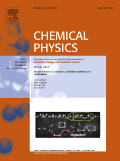
CHEMICAL PHYSICS
Exploring the Intersection of Chemistry and Physics.CHEMICAL PHYSICS is a premier international journal published by Elsevier, dedicated to advancing the field of theoretical and experimental chemistry, particularly within the physical domain. Since its inception in 1973, this journal has served as a platform for disseminating cutting-edge research, fostering collaboration among researchers and professionals in the community. With a notable impact factor and recognized in the Scopus rankings, CHEMICAL PHYSICS holds esteemed positions in two categories: Q3 in Physical and Theoretical Chemistry and Q2 in Physics and Astronomy (miscellaneous). Published in the Netherlands, the journal features high-quality articles that cover a broad spectrum of topics, aiming to deepen understanding of chemical phenomena through innovative approaches. Although open access options are not currently available, the journal remains invaluable for researchers, students, and professionals seeking to stay informed about the latest developments in chemical physics. With convergence years extending from 1973 to 2025, CHEMICAL PHYSICS continues to be a significant contributor to the academic discourse in its field.
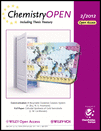
ChemistryOpen
Igniting Innovation in ChemistryChemistryOpen is a leading open access journal published by WILEY-V C H VERLAG GMBH, dedicated to advancing the field of chemistry. With its ISSN 2191-1363, this journal has been a vital platform since its inception in 2012, promoting unrestricted access to innovative research findings and critical reviews in various chemistry domains. As a testament to its growing influence, ChemistryOpen has achieved a commendable Q2 quartile ranking in the 2023 Chemistry (miscellaneous) category, which highlights its quality and impact within the academic community. Researchers, professionals, and students benefit from the journal's commitment to making high-quality research accessible, facilitating knowledge transfer and collaborative insights among chemists worldwide. The journal's transparent open access model ensures that groundbreaking discoveries and methodologies are readily disseminated, fostering a culture of innovation and interdisciplinary dialogue in the ever-evolving landscape of chemistry.

RUSSIAN JOURNAL OF APPLIED CHEMISTRY
Pioneering Research at the Intersection of Chemistry and EngineeringRUSSIAN JOURNAL OF APPLIED CHEMISTRY, published by PLEIADES PUBLISHING INC, serves as a pivotal platform for advancing knowledge in the fields of chemical engineering and general chemistry. With an ISSN of 1070-4272 and an E-ISSN of 1608-3296, this journal has been in continuous publication since 1995 and is set to continue until 2024. Although it operates without an open access model, researchers can access a wealth of innovative research findings, critical reviews, and insightful discussions that reflect the current trends and challenges in applied chemistry. Its rankings place it in Q3 quartiles for both Chemical Engineering and Chemistry as of 2023, indicating its emerging influence within these disciplines. The Scopus rankings further highlight its relevance, positioning it in the lower percentiles, suggesting a fertile ground for researchers aiming to elevate the field. Engaging with this journal can enrich academic and professional understanding, making it an essential resource for anyone dedicated to furthering their expertise in applied chemistry.

Annual Review of Physical Chemistry
Unveiling the Latest Trends in Physical Chemistry ResearchAnnual Review of Physical Chemistry, published by Annual Reviews, stands as a premier source of comprehensive review articles in the field of physical chemistry. With a prestigious impact factor and a strong reputation reflected in its Q1 rankings in both Physical and Theoretical Chemistry and Medicine (Miscellaneous), this journal is essential for researchers seeking to stay at the forefront of advancements in the discipline. Covering a wide array of topics, the Annual Review of Physical Chemistry synthesizes the latest findings, trends, and methodologies, providing a vital resource for professionals and students alike. Although it does not offer open access, its scholarly rigor and in-depth analyses ensure it occupies a critical space in academia. Its consistent publication since 1975 guarantees that it has historical significance and relevance, making it a cornerstone for those engaged in cutting-edge research within the realm of physical chemistry.
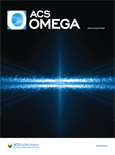
ACS Omega
Exploring Boundless Frontiers in Chemical Research.ACS Omega is a prominent open-access journal published by the American Chemical Society that has been serving the global research community since its inception in 2016. With ISSN 2470-1343, it focuses on a wide array of topics within the realm of Chemistry and Chemical Engineering, making it a crucial platform for researchers and practitioners aiming to disseminate significant findings across these disciplines. The journal maintains an impressive standing, ranking in the Q2 quartile for both Chemical Engineering and Chemistry categories, highlighting its impact and relevance in contemporary research. Additionally, with its Scopus ranks placing it within the top 24% and 27% of General Chemistry and General Chemical Engineering respectively, ACS Omega continues to foster innovation and facilitate collaboration among scientists. As an Open Access journal, it ensures that research outputs are freely available to all, enhancing the accessibility and visibility of contributors’ work, thus playing a critical role in advancing scientific knowledge globally from its headquarters in Washington, D.C.
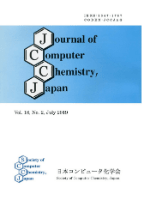
Journal of Computer Chemistry-Japan
Bridging Theory and Application in Chemical InformaticsJournal of Computer Chemistry-Japan, published by SOC COMPUTER CHEMISTRY, JAPAN, is a dedicated platform for researchers and professionals in the interdisciplinary fields of computational chemistry and chemical informatics. Though the journal does not currently provide open access, it maintains a rigorous selection process for contributions, ensuring the publication of high-quality, peer-reviewed research. With a focus on advancing computational methods and techniques to solve complex chemical problems, the journal aims to bridge the gap between theoretical chemistry and practical applications, making it an invaluable resource for academics and industry professionals alike. As the complexity of chemical systems continues to rise, the relevance of computational approaches in material science, drug discovery, and molecular modeling has never been more critical. Researchers are encouraged to engage with the contents of this journal, which showcases innovative studies, methodologies, and discussions relevant to the evolving landscape of computer-aided chemistry.
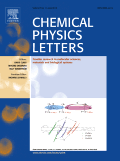
CHEMICAL PHYSICS LETTERS
Connecting Researchers to the Pulse of Chemical PhysicsCHEMICAL PHYSICS LETTERS, published by Elsevier, is a prestigious journal that has been at the forefront of advancing knowledge in the fields of physical and theoretical chemistry and physics since its inception in 1967. With an impressive impact factor reflective of its high-quality research output, this journal holds Q2 quartile rankings in both the Physical and Theoretical Chemistry and Physics and Astronomy categories for 2023. It is recognized as a key platform for disseminating groundbreaking findings, with Scopus rankings placing it within the top 76th and 66th percentiles in its respective categories. Researchers and professionals benefit from its insightful contributions and rigorous peer-review process, making it an essential resource for those engaged in cutting-edge chemical physics studies. Although the journal is not open access, it remains accessible through various institutional subscriptions, ensuring that a wide audience can explore its wealth of knowledge. Located in Amsterdam, Netherlands, the journal continues to drive innovation and collaboration across diverse scientific disciplines.
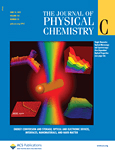
Journal of Physical Chemistry C
Driving excellence in surfaces, coatings, and films.The Journal of Physical Chemistry C, published by the American Chemical Society, stands as a pivotal resource in the realm of materials science and physical chemistry. With an impact factor reflecting its esteemed reputation, this journal showcases high-quality research spanning topics such as electronic, optical, and magnetic materials, as well as nanoscience and nanotechnology. Hailing from the United States, it operates without an open access model, yet its contributions are critical for advancing our understanding of surfaces, coatings, and films. Notably, the journal is classified in Quartile 1 (Q1) for several categories, underscoring its prominence in Physical and Theoretical Chemistry and related fields. Researchers, professionals, and students alike will find value in the comprehensive discussions and innovative research trends presented. The scholarly articles published from 2007 to 2024 not only drive forward scientific inquiry but also inform practical applications in various industries, making this journal an essential tool for anyone committed to excellence in the sciences.

Molbank is an open-access journal published by MDPI, dedicated to the fields of Biochemistry, Organic Chemistry, and Physical and Theoretical Chemistry. Established in 2002, this journal has served as a vital platform for the dissemination of research findings, where researchers and professionals share original articles focusing on molecular chemistry, synthesis, and related studies. With a commitment to open access, Molbank enables global access to scientific knowledge, fostering collaboration and innovation among scientists. While currently categorized in the fourth quartile for its field rankings, it provides a unique opportunity for emerging scholars to contribute to and engage with the scientific community. The journal is based in Switzerland, operating from its office at ST ALBAN-ANLAGE 66, CH-4052 BASEL, SWITZERLAND, and continues to attract submissions until 2024. Researchers, students, and professionals looking to expand their knowledge and participate in the dialogue of current molecular chemistry can benefit significantly from engaging with the content published in Molbank.